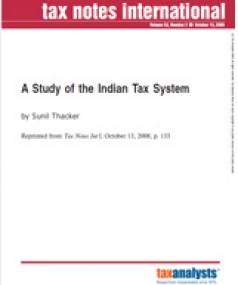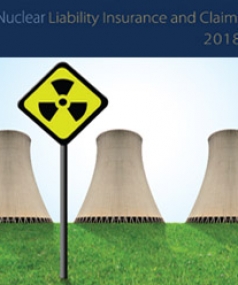Grounds for Rejection of the Plaint: The Indian Civil Procedure Code
 The plaint is petitioned for instituting a suit in the civil or commercial courts. A court of civil jurisdiction will be administered by the provisions of the Civil Procedure Code, 1908 (CPC). Order VII of CPC is visualized with the provisions of the dismissal of the plaint by the Court. This article will talk about the grounds of dismissal, the impediment time frame after dismissal inside which the plaint should be filed again and other enlightening things. This procedure is simply a principle which guarantees only the best possible utilization of the Court Fees Act, 1870.
The plaint is petitioned for instituting a suit in the civil or commercial courts. A court of civil jurisdiction will be administered by the provisions of the Civil Procedure Code, 1908 (CPC). Order VII of CPC is visualized with the provisions of the dismissal of the plaint by the Court. This article will talk about the grounds of dismissal, the impediment time frame after dismissal inside which the plaint should be filed again and other enlightening things. This procedure is simply a principle which guarantees only the best possible utilization of the Court Fees Act, 1870.
The court is vested with the duty that, before a suit is established, to appropriately inspect the plaint, to decide, regardless of whether it ought to be returned, or dismissed and so as to decide, the subject of dismissal. It is the court’s obligation to take into consideration, different materials as well, Order VII Rule 11 of CPC describe situations where plaint ought to be dismissed.
Order VII Rule 11 of CPC explains on the dismissal of plaints in specific circumstances and conditions. It has referenced certain grounds based on which the courts dismiss the plaints. One of them is not referencing the reason or the cause of action that the offended party looks for against the respondent.
It is essential to decide upon the application of dismissal of the plaint under Order VII. The litigant cannot be forced to record a written statement or a composed proclamation without settling on such an application if any.
Besides, this rule can be applied at any phase of the procedures. For a situation under the steady gaze of the Calcutta High Court, Selina Sheehan vs Hafez Mohammad Fateh Nashib [AIR 1932 Cal 685], the plaint was dismissed much after it was given a suit number.
The Court must analyze the plaint altogether and decide whether the plaint ought to be accepted or sent back for offering some reparation to it. In any case, the plaint will undoubtedly be dismissed by the Court in the accompanying conditions –
- Order VII Rule 11 (a) - When the cause of action is not mentioned in the plaint
Cause for Action has been referenced under plenty of provisions in the CPC. It is a set of claims or actualities which compensate for the grounds for accepting a civil suit. One instance of the cause of action is under Order II Rule 2 of CPC. In that, it has been expressed that to establish a lawsuit, the reason should be unequivocally referenced to in the plaint.
If it has not been referenced, at that point the plaint will be dismissed by the Court.
It is the sole motivation behind why a civil suit exists in any case. It determines the legitimate damage which the individual who is founding a suit has endured. It likewise has the cure or help which the offended party will request that the Court award.
The individual initiating such suit likewise needs to demonstrate specific components like: -
- that there existed an obligation or a duty;
- the event of a breach or break of that obligation;
- the reason for such a breach; and
- the harms inflicted by the offended party.
Along these lines, if the plaint does not affirm the facts which are required for facilitating the case of the offended party, the plaint will be expelled by the Court referring to the justification and grounds for such dismissal.
It is pertinent to note that one person should not be bothered twice for the same cause of action. The real test for the adjudicating authorities is that the cases falling under these provisions of CPC must reply the query that the case in the new suit is found upon an alternate reason for the activity. In any case, the offended party is at full freedom to discard any piece of the evidence.
 For instance, ‘ABC’ rents an apartment from ‘XYZ’ at a lease of INR 100,000 per anum. The contract for the entire of the years 2015, 2016 and 2017 is still pending and is yet to be realised. ‘XYZ’ institutes an action against ‘ABC’ in 2019 for asserting the sum which was expected. The suit was regarding the lease due in 2015. Hence, ‘XYZ’ cannot sue ‘ABC’ subsequently for the rent due for the rest of the years.
For instance, ‘ABC’ rents an apartment from ‘XYZ’ at a lease of INR 100,000 per anum. The contract for the entire of the years 2015, 2016 and 2017 is still pending and is yet to be realised. ‘XYZ’ institutes an action against ‘ABC’ in 2019 for asserting the sum which was expected. The suit was regarding the lease due in 2015. Hence, ‘XYZ’ cannot sue ‘ABC’ subsequently for the rent due for the rest of the years.
The Supreme Court in Alka Gupta vs Narendra Kumar Gupta[(2010) 10 SCC 141] reiterated on the fact that the cause of action in the preliminary suit was not compensating the cost under the sale agreement, though, in the subsequent suit, the reason for activity was non-settlement of records of the partnership that was dissolved. Order II Rule 2 discovers substance when both the fits depend on a similar cause of action.
Joint Cause of action
Order II Rule 4 of CPC sets out the circumstances in which the cause of action would not be joined or heard together except if the Court has permitted doing as such. Following are the exemptions to the preceding –
- Cases for claiming mesne benefit or amount outstanding of the lease regarding the claimed property or any part thereof;
- Cases for claiming damages or harms for breach of any agreement under which the property or any part thereof is held.
Misjoinder of Cause of Action
At the point when the different cause of actions is being brought together in the suit which cannot be combined, there can be no such joinder. All complaints concerning the misjoinder of a cause of action should be tended to as early as could be possible. It is a presumption that if a complaint is not raised against the misjoinder, this privilege is considered to be waived off.
Subodh Kumar Gupta v. Shrikant Gupta [1993 (3) ALT 59 SC]
There was an organisation firm which had its registered office in Bombay, and the processing plant was in Mandsaur. Two of the three partners in the firm had their living arrangements in Mandsaur though one was living in Chandigarh. Subsequently, an agreement was executed among them for dissolving the firm. Rendering of records of the firm was likewise mentioned on the supposed misappropriation of the assets of the firm.
A suit was filed by one of the partners in Chandigarh. The Supreme Court had held that the Courts at Chandigarh had no kind of jurisdiction in the issue. Courts at Bhilai had the authority instead of considering the agreement.
K. Thakshinamoorthy vs State Bank of India [AIR 2001 Mad 167]
Upon filing the revision petition against the Additional Judge had dismissed the plaint because there was no cause of action referenced. The respondents tried to get the plaint dismissed all things considered. Eventually, the plaint was dismissed on the grounds of an absent cause of action.
The Relief Afforded Under CPC
Relief must be explicitly expressed in the plaint. Rule 7 of Order VII of CPC necessitates that a plaint needs to contain the recourse that the offended party claims. It very well may be anything, for example, harms, a directive, revelation, arrangement of a collector, and so on.
If an offended party except when permitted by the Court excludes any alleviation to which he is qualified for sue, he would not be conceded such help a while later. At some occasions, the Court awards help on an unexpected ground in comparison to express in the plaint. The help asserted by the offended party or the respondent might be a general alleviation or an elective alleviation.
Raghwendra Sharan Singh vs Ram Prasanna Singh [AIR 2019 SC 1430]
The cause of action, in this case, had emerged when the offended party challenged the gift deed after a time of roughly twenty-two (22) years from the date of the execution of the equivalent. The offended party for the situation has challenged the deed of gift with the charges that the gift deed is a gaudy one subsequently not authoritative.
The Hon'ble Supreme Court, after hearing the two sides, in perspective on the realities of the case, held that the Law of Limitation unequivocally restricts this suit. What's more, the plaint should be dismissed under Order VII Rule 11 of CPC.
- Order 7 rule 11 – Locus Standi
To file a suit, the offended party needs to have a locus standi. One needs to show that some legitimate right of the individual has been damaged. Such infringement ought to likewise bring about some damage caused to the individual.
If no lawful right has been disregarded, the individual would not have a locus standi for recording a suit. The gathering fundamentally can show the Court that there was an adequate reason for activity behind the documenting of the suit.
The locus standi of the suit relies on whether any grounds were abused which brought about the dismissal of the plaint.
Pirthi Singh and Ors. vs Chander Bhan and Anr.
In this case, a revision petition was filed by the defendant, who was the petitioner, against the order of the judge of the junior division. The offended party argued that the respondent had deluded the Court by expressing an inappropriate fact.
Accordingly, the application was expelled wherein the Punjab-Haryana High Court expressed that there was no wrongdoing in the request passed by the Ld. Judge. What's more, consequently the candidates had no locus standi to document the case. Therefore, such rejection.
- Undervalued relief claimed in the suit
If it is brought to the knowledge of the court, that the valuation of the suit if fabricated or baseless, the court can order the plaintiff to re-evaluate the amount and may allow sufficient time for the correction. Subsequently, the plaint can be rejected if the plaintiff fails to abide by.
- Insufficient Stamps Under the Court Fee Act, 1870
The recording of the plaint initiates each suit, one of the prerequisites for the correct institution of the suit is that it must be appropriately stamped for the reasons for the court fees under the Court Fee Act, 1870. If the plaint is lacking stamp, the court dismisses the plaint under Order VII Rule 11 of CPC and give an adequate time to explain the reason for disappointments.
Dismissing a Suit as Compared to Rejection of the Plaint
The distinction between the dismissing a suit and rejection of plaint is that there no particular grounds on which a lawsuit may be rejected. On the off chance that the request has not been appropriately served upon the litigant, the suit is at risk to be expelled.
Another ground is that neither one of the parties shows up upon the arrival of hearing, at that point the Court can make a request dismissing the suit. Order IX of CPC expresses specific grounds based on which a lawsuit can be rejected. Then again, rejection of plaint happens just under Order VII Rule 11 of CPC.
CPC is a thorough resolution which covers the entire methodology which should be trailed by all the civil courts in India. The plaint is the initial step to recording a suit in the court. It should be drafted with due steadiness and diligence. It must incorporate every one of the points of interest that have been referenced all together in Order VII.
- When the statement of the suit appears to be barred by the law
It is important to note that, when the suit filed appears from as barred by any statute and gives no such right to the plaintiff for instituting the suit, it shall be liable to be rejected.
- When the plaint of not filed in duplicate
When a suit is to be instituted, a duplicate copy must be submitted. Failing which, the court has the right to dismiss or reject the lawsuit.
Two modes of rejecting a plaint
- The defendant can apply the form of Interlocutory Application at any stage of the procedures.
- Suo moto rejection - Order VII Rule 11
By its motion, the court can, on its own, try or reject the suit, if the conditions mentioned explicitly in CPC, are fulfilled.
To conclude, one needs to understand the following grounds where a plaint can be rejected: -
- Where the suit is undervalued
- Where there is an absence of a cause of action
- Where any statement in the plaint is such that it is barred by law
- Plaint is not filed in duplicate
 This article is meant for the readers to get an exhaustive comprehension of these provisions and how it can get value for them to understand. CPC is the most significant subject for any individual who needs to get in the suit and who needs an added insight in a typical case.
This article is meant for the readers to get an exhaustive comprehension of these provisions and how it can get value for them to understand. CPC is the most significant subject for any individual who needs to get in the suit and who needs an added insight in a typical case.
Aside from this, different utilizations are endorsed in Code of Civil Procedure, 1908 to meet the parts of the bargains counteract unfairness. These applications need to record with the first reply from the defendant or at some other phase of procedures.
 English
English
 عربي
عربي Русский
Русский 官话
官话 português
português
 Türk
Türk 



















